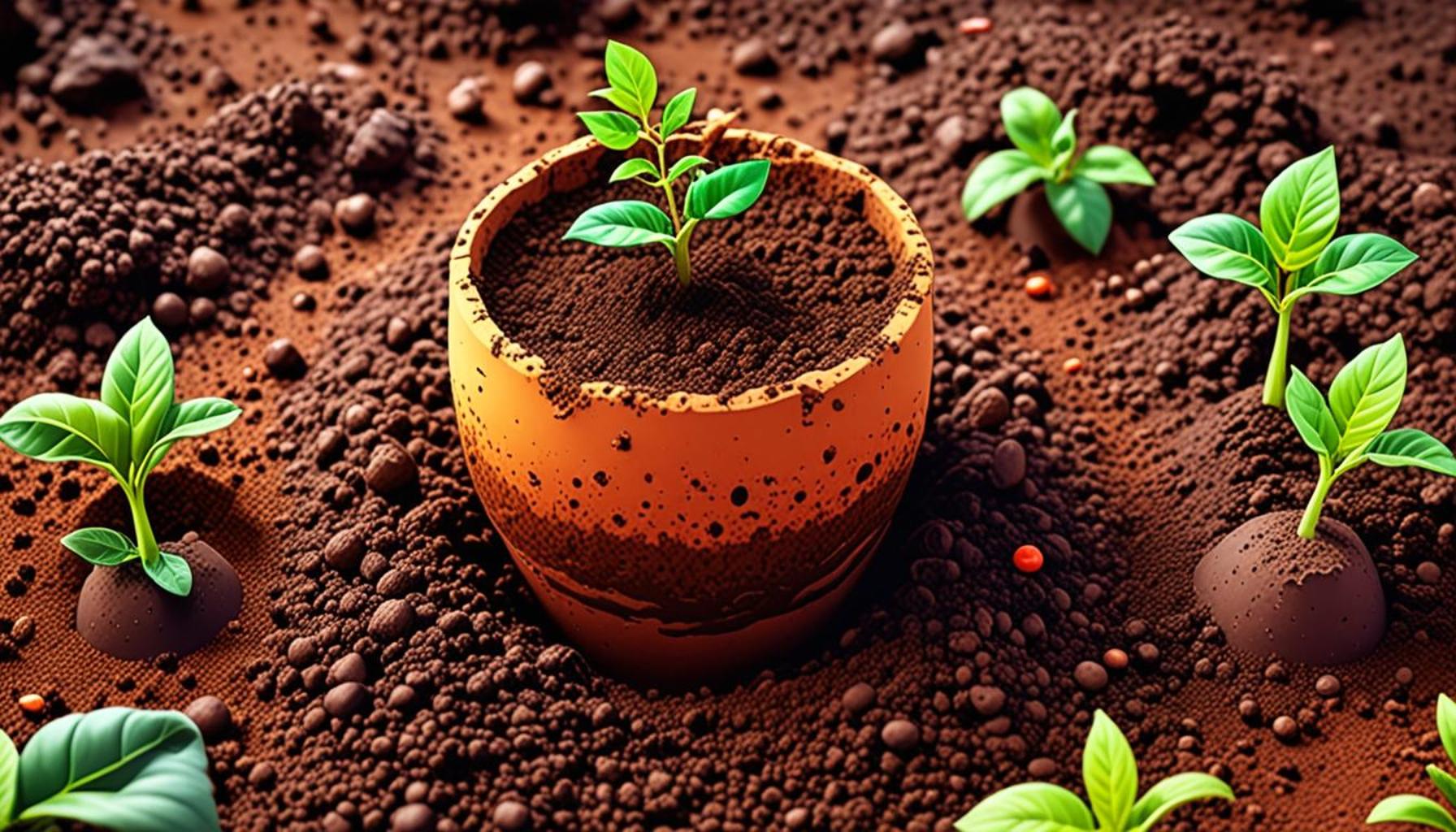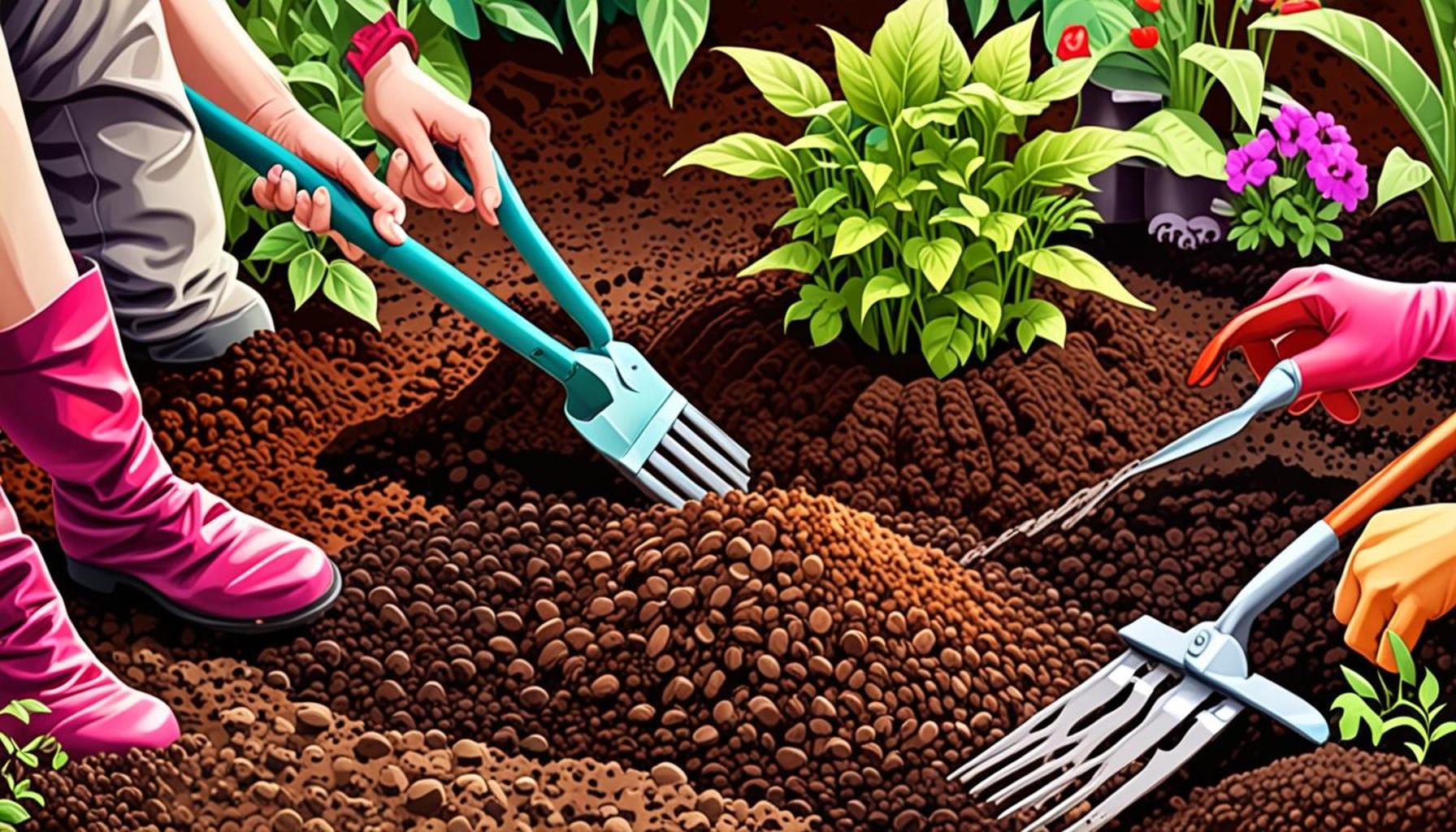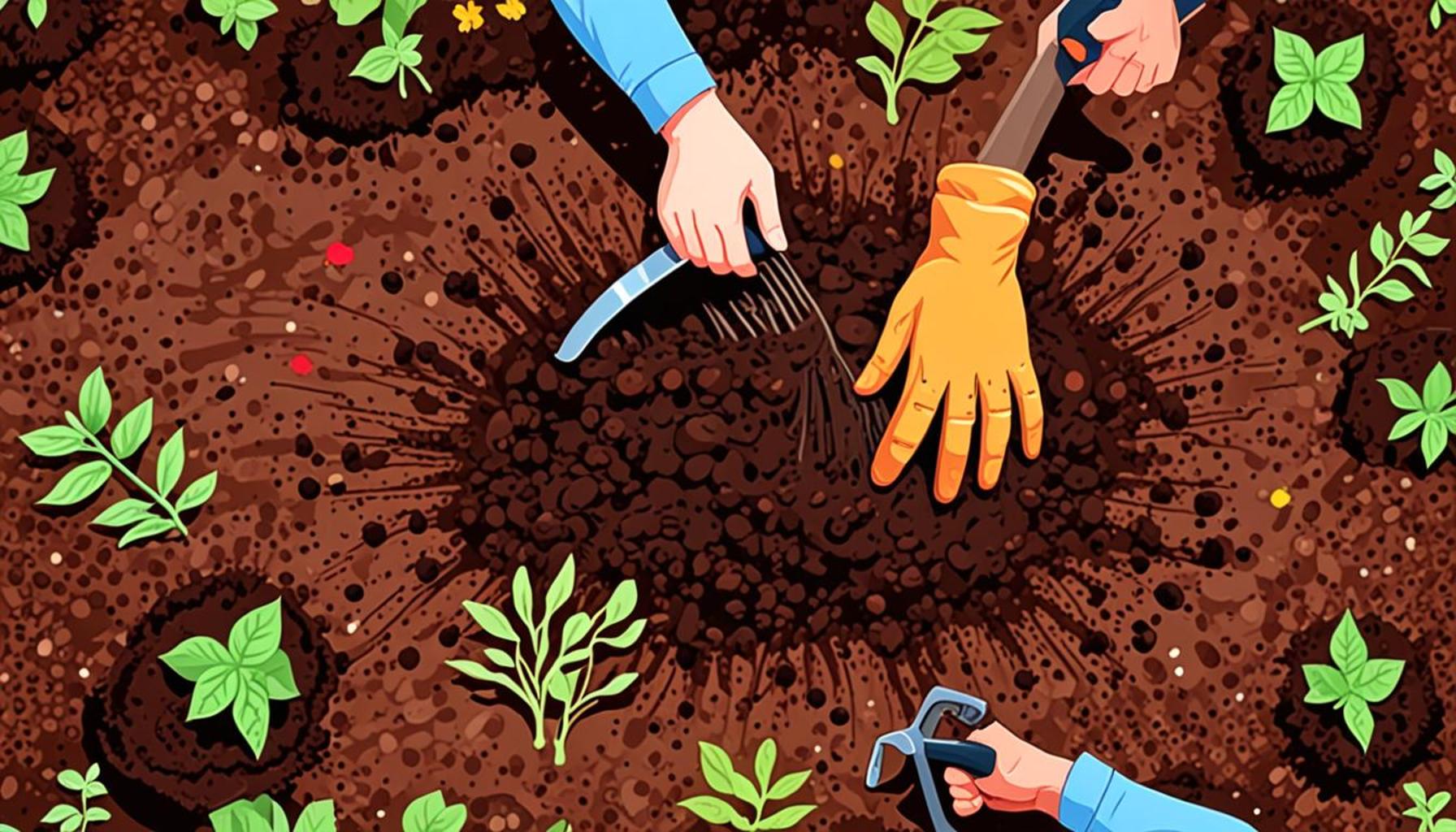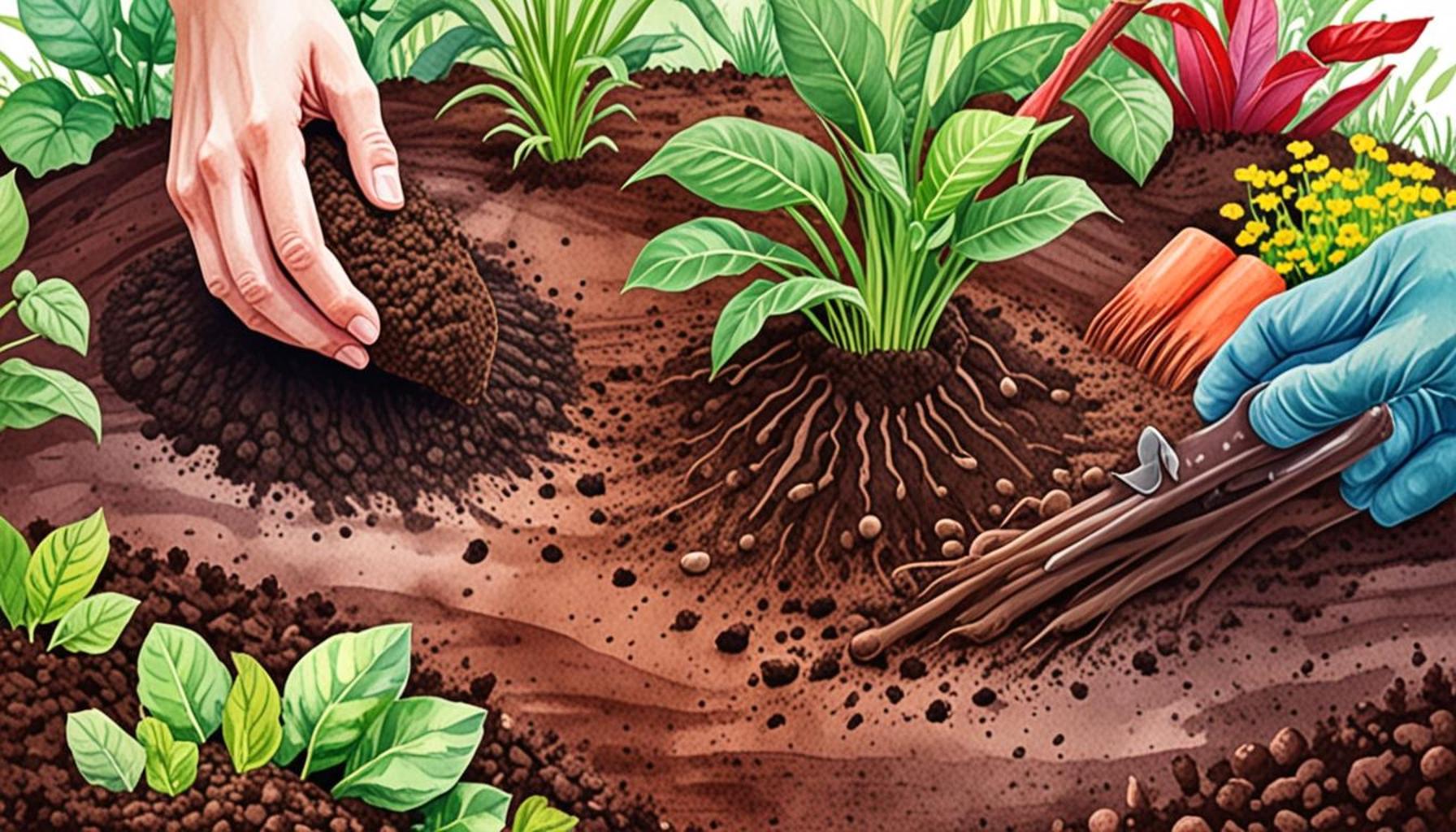How Soil Structure Affects Plant Growth: What Beginners Need to Know

Understanding Soil Structure
When it comes to gardening and farming, soil structure is a vital factor that often goes unnoticed. This hidden component can significantly influence how plants grow, thrive, and interact with their environment. For beginners, grasping the intricate relationship between soil structure and plant growth can be a game changer.
Key Elements of Soil Structure
Soil structure refers to how soil particles—like sand, silt, and clay—are arranged. This arrangement affects various aspects of soil health, which include:
- Aeration: Well-structured soil allows air to circulate, supporting root respiration. This is crucial for the development of healthy roots and the overall growth of plants. Vegetables like carrots and onions, for example, thrive in soil that is aerated and not overly compacted.
- Water Retention: The correct soil structure helps retain moisture, critical for plant survival. Soils that are too compact may create runoff rather than allowing water to seep deep into the ground, leading to inadequate watering of plant roots. Properly structured soil strikes a balance, facilitating effective moisture retention while preventing waterlogging.
- Nutrient Availability: Soil particles bind nutrients, making them accessible to plants. The type of soil structure greatly influences how nutrients like nitrogen, phosphorus, and potassium are retained and utilized by plants, which ultimately impacts growth and yield.
Beginning gardeners should also understand how different soil types affect plant growth. Each soil type has its distinct characteristics:
- Loamy Soil: A balance of sand, silt, and clay that is ideal for most plants. It retains moisture but also drains excess water effectively, making it the preferred choice among gardeners across the United States.
- Clay Soil: Very compact, clay soil can hinder root growth if not managed properly. This type of soil can hold nutrients well but often leads to poor drainage, potentially suffocating plants. Regular tilling and incorporating organic material, such as compost, can improve its structure.
- Sandy Soil: This type drains quickly but may lack nutrients and require frequent amendments. While sandy soil is easier to till and warms up faster in spring, it often necessitates the addition of organic matter to help retain moisture and nutrients, as seen in many regions like California.
As you dive deeper into the world of gardening, you’ll find that improving your soil structure could unlock the full potential of your plants. Techniques like cover cropping, adding organic materials, and practicing crop rotation can significantly enhance soil health. Understanding these foundational concepts is the first step towards growing a flourishing garden, leading you to explore further into more advanced topics like soil microbiomes and sustainable gardening practices. Remember, better soil leads to better plants, and the journey to a vibrant garden starts from the ground up.
DISCOVER MORE: Click here for essential harvesting tools
The Importance of Soil Texture and Composition
At the core of understanding soil structure lies the concept of soil texture and composition. The relative proportions of sand, silt, and clay in your soil not only determine the feel of the soil but also affect its functionality in the garden. Each component plays a critical role in how soil behaves, which in turn influences plant health and growth.
Soil Texture: A Game Changer for Gardeners
Soil texture significantly impacts essential elements such as drainage, aeration, and nutrient retention. Let’s delve into how these attributes shape your gardening experience:
- Aeration: As mentioned earlier, air circulation is crucial for root development. Compact soil can suffocate roots by trapping carbon dioxide and inhibiting oxygen exchange. On the flip side, well-structured soils with adequate texture allow roots to grow freely. This is why gardeners often recommend aerating compact soils through methods such as core aeration or adding organic materials that promote structure.
- Drainage: Drainage is closely tied to soil texture. Sandy soils drain quickly, which can be beneficial in regions like Florida, where excessive rain can cause waterlogging. However, too much drainage can also lead to dryness, requiring constant supplemental watering. In contrast, clay soils retain moisture but often retain too much, thereby creating a soggy environment detrimental to plant roots.
- Nutrient Retention: Different textures hold nutrients differently. Clay soils can be nutrient-rich due to their ability to bind minerals, while sandy soils, although quick to drain, often leach away essential nutrients. This necessitates the frequent addition of fertilizers, especially in states with less organic matter in the soil, like Nevada. Understanding the texture and adjusting nutrient inputs accordingly is vital for fostering healthy plant growth.
Knowing the differences in soil texture can empower beginners in making informed decisions about their gardening practices. To improve your soil structure, consider incorporating:
- Compost: This organic material enriches soil structure, improving aeration and nutrient-holding capacity. It’s excellent for all soil types and encourages beneficial microorganisms.
- Mulch: Applying organic mulch not only conserves moisture but also adds structure as it decomposes, particularly beneficial in maintaining soil health throughout the hot summer months.
- Organic Cover Crops: Planting species like clover or rye can help restore soil health by preventing erosion and enhancing nutrient levels when tilled under.
As you begin your gardening journey, recognizing the relationship between soil texture and composition and its effects on plant growth will equip you with valuable insights for better cultivation practices. The journey to revitalizing your soil can yield a thriving garden that flourishes in the long run, leading to fruitful harvests and vibrant landscapes.
How Soil Structure Influences Water Retention
One of the critical aspects of soil structure is its impact on water retention and drainage, which directly affects plant growth. The arrangement of soil particles creates different pore sizes between them, influencing how water moves through the soil. In well-structured soils, there are larger pores that allow for adequate drainage, preventing waterlogging, while smaller pores retain moisture for plant uptake. A balanced soil structure ensures that roots have access to both water and oxygen, essential elements for healthy growth.
Nutrient Accessibility and Soil Structure
In addition to water, soil structure significantly determines the availability of essential nutrients. Healthy soil aggregates enhance the soil’s cation exchange capacity (CEC), allowing it to retain and release nutrients more effectively. When soil is compacted or poorly structured, nutrients may become inaccessible to plant roots, leading to deficiencies. For beginners, understanding the importance of maintaining a balanced soil structure is vital, as it can ultimately dictate the success of their gardening efforts.
Impact of Soil Structure on Root Development
A well-aerated and structured soil promotes vigorous root development. Roots grow vigorously when they can navigate through loose, crumbly soils, which in turn enables plants to access more nutrients and water. Compacted soils restrict root growth, potentially leading to stunted plants. Beginners should routinely check and enhance their soil structure by incorporating organic matter, which acts as a natural soil conditioner, improving aeration and moisture retention.
| Category | Advantages |
|---|---|
| Water Retention | Improves moisture availability for plants. |
| Nutrient Availability | Enhances the ability to retain and release nutrients. |
| Root Growth | Supports healthy root system development. |
Understanding these factors related to soil structure can greatly influence beginner gardeners’ success. It is essential to consider the soil’s physical properties in any gardening or planting endeavor to maximize plant health and productivity.
DISCOVER MORE: Click here to learn about manual harvesting techniques
The Role of Soil Structure in Plant Health
Beyond texture and composition lies the fundamental aspect of soil structure, which refers to the arrangement of soil particles and the pore spaces between them. This structure is not just a characteristic of the soil but plays a pivotal role in influencing various biological and chemical processes crucial for maintaining healthy plants. For beginners, understanding how soil structure affects plant growth can lead to empowered gardening decisions.
Soil Aggregates and Plant Interaction
One of the primary features of soil structure is the formation of soil aggregates. These aggregates are clusters of soil particles that bind together, creating a network of larger and smaller pores. The presence of aggregates in soil has several significant impacts:
- Water Retention: Well-structured soils with aggregates can retain moisture more efficiently than consistently compacted soils. The pores created by aggregates provide storage spaces for water while allowing excess water to drain away. This balance is crucial for plants to access the right amounts of moisture, especially during dry spells.
- Root Penetration: Soil aggregates facilitate root growth by creating channels that allow roots to penetrate deeper into the ground. This access to moist soil layers can significantly enhance a plant’s ability to thrive, particularly in times of drought. In contrast, compacted soils create a barrier that restricts root development, directly impacting plant health.
- Microbial Activity: Healthy soil structure supports a thriving community of microbes and beneficial organisms. These organisms are essential for breaking down organic matter and releasing nutrients into the soil. Their activity can significantly increase soil fertility, which is pivotal for plant growth.
To promote the formation of beneficial soil aggregates, consider these practices:
- Minimal Tillage: Reducing soil disturbance helps maintain existing soil aggregates and encourages further development over time. Conventional tillage practices can destroy these structures and lessen soil health.
- Cover Crop Rotation: Introducing cover crops such as vetch or buckwheat in your garden can enhance soil structure by promoting microbial activity and preventing erosion during off-seasons.
- Organic Amendments: Adding organic matter like aged manure or compost can enhance both soil texture and structure, as these materials contain compounds that encourage aggregates’ development.
Impact of Soil Structure on Soil pH and Nutrients
Another critical connection between soil structure and plant growth is the interaction with soil pH and nutrient availability. A well-structured soil often has a more balanced pH and nutrient profile:
- Soil pH Levels: The structure of soil can affect how well water and nutrients move through it, in turn impacting the availability of essential elements like nitrogen, phosphorus, and potassium. A properly structured soil aids in achieving optimal pH levels I
- Nutrient Cycling: Well-aerated soils with good structure enable the cycling of nutrients, allowing them to be readily available for plant uptake. Poorly structured soils may lead to nutrient lock-up, where plants are unable to absorb important elements necessary for their growth.
By understanding the nuances of soil structure and how it impacts essential factors like water retention, nutrient availability, and microbial health, beginners will be equipped to enhance plant growth sustainably. These insights can transform gardening methodology to create flourishing gardens that embody the core tenets of successful cultivation.
DON’T MISS OUT: Click here to learn how to protect your crops</a
Conclusion: Empowering Gardening Through Soil Awareness
In summary, understanding soil structure is essential for beginners aiming to cultivate thriving plants. From the formation of soil aggregates that facilitate water retention and root penetration to the dynamic interplay of soil pH and nutrient availability, every aspect of soil structure contributes profoundly to plant health. As we have explored, well-structured soils not only support better moisture management but also foster a vibrant ecosystem of beneficial microbes that are crucial for nutrient cycling.
For aspiring gardeners, the implications are clear: adopting practices such as minimal tillage, integrating cover crop rotations, and enriching soil with organic amendments can markedly enhance soil health. These strategies do not just create a desirable growing environment; they also instill long-term sustainability in gardening efforts. By taking steps to improve soil structure, gardeners can unlock the full potential of their plants while contributing positively to overall environmental health.
As you embark on your gardening adventure, remember that nurturing soil is just as vital as planting seeds. With these insights into how soil structure affects plant growth, you will feel empowered to make informed decisions that will lead to lush, productive gardens. Dive deeper into the subject, continually explore new techniques, and watch your green spaces flourish with life and vitality.


